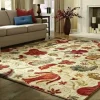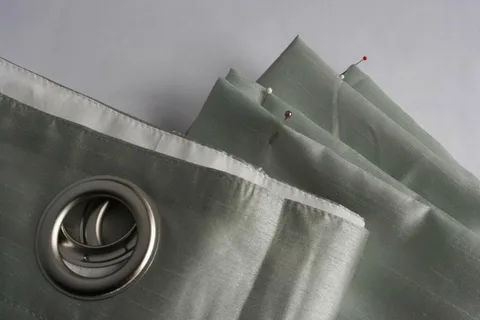The Ultimate Curtain Alteration Guide
- Home Improvement
 Asad
Asad- March 11, 2024
- 68

Curtains are more than just window coverings; they are an integral part of interior design that can transform the ambiance and aesthetics of any room. However, finding curtains that fit perfectly straight off the shelf can be challenging, especially when dealing with non-standard window sizes or unique design preferences. That’s where curtain alterations come in handy. In this comprehensive guide, we’ll walk you through the essential steps and techniques for altering curtains to fit your space like a glove.
Assessing Your Needs:
Before diving into curtain alterations, it’s essential to assess your needs and preferences. Consider factors such as the desired length, width, fabric, and style of your curtains. Are you looking to create a dramatic floor-to-ceiling effect, or do you prefer a more tailored and minimalist look? Understanding your requirements will guide you in making informed decisions throughout the alteration process.
Measuring Your Windows:
Accurate measurements are the cornerstone of successful curtain alterations. Begin by measuring the width and height of your windows, taking into account any trim or molding that may affect the final fit. For width, measure the distance from one side of the window frame to the other, adding extra width for fullness and coverage. For height, measure from the top of the window frame to the desired length of the curtains, whether they’ll graze the floor or hover just above it.
Choosing the Right Tools and Materials:
To undertake curtain alterations effectively, you’ll need a few essential tools and materials, including:
- Measuring tape: For accurate measurements of window dimensions.
- Fabric scissors: To cut the curtains to the desired length and width.
- Sewing machine or needle and thread: Depending on your sewing proficiency and the complexity of the alterations.
- Pins and clips: For securing hems and seams during the alteration process.
- Iron and ironing board: To press seams and hems for a polished finish.
Additionally, consider the type of fabric you’re working with and ensure that your tools are suitable for the task at hand. Read more: https://websarticle.com/
Altering Curtain Length:
Adjusting the length of your curtains is one of the most common alterations. Whether you’re shortening floor-length drapes or lengthening café curtains, the process follows a few simple steps:
- Measure and mark the desired length of the curtains, adding a few inches for hems.
- Cut the fabric to the appropriate length, ensuring straight and even edges.
- Fold and press the bottom hem, pinning it in place before sewing.
- Use a straight stitch or blind hem stitch to secure the hem, ensuring durability and a clean finish.
For longer curtains, consider adding weights to the bottom hem to help them hang smoothly and prevent wrinkling.
Adjusting Curtain Width:
If your curtains are too narrow for your windows or need extra fullness for a more luxurious look, altering the width is a straightforward process:
- Measure the desired width of the curtains, taking into account the additional fabric needed for gathering and fullness.
- Cut additional fabric panels to the desired width, ensuring that the pattern or texture matches seamlessly with the existing curtains.
- Sew the additional panels to the sides of the curtains, using a straight stitch or zigzag stitch for durability.
- Press the seams open and flat to create a seamless appearance.
Customizing Curtain Headers:
The header style of your curtains can significantly impact their overall appearance and functionality. Common header styles include rod pockets, pinch pleats, grommets, and tab tops, each offering unique aesthetic and functional benefits. To customize your curtain headers:
- Choose the desired header style based on your preferences and the overall design of your space.
- Measure and mark the placement of the header, ensuring even spacing and alignment.
- Sew or attach the header to the top of the curtains, following manufacturer instructions or sewing guidelines for the chosen header style.
- Press the header flat to create crisp, clean lines and a professional finish.
Fitting Curtains to Non-Standard Windows:
For windows with unusual shapes or sizes, such as bay windows or arched windows, customizing curtains may require additional creativity and expertise. Consider consulting with a professional seamstress or curtain maker who can offer tailored solutions and guidance based on your specific needs.
Finishing Touches:
Once you’ve completed the curtain alterations, take the time to inspect your work and make any necessary adjustments. Trim loose threads, press seams and hems, and hang the curtains to ensure they drape smoothly and evenly. Stand back and admire your handiwork, reveling in the satisfaction of curtains that fit your space perfectly.
Conclusion:
In conclusion, curtain alterations offer a practical and cost-effective solution for achieving the perfect fit and style for your windows. By following the steps outlined in this guide and investing time and attention to detail, you can transform ordinary curtains into custom-made drapery that enhances the beauty and functionality of your space. With the right tools, materials, and techniques, you’ll be well-equipped to tackle any curtain alteration project with confidence and skill.
